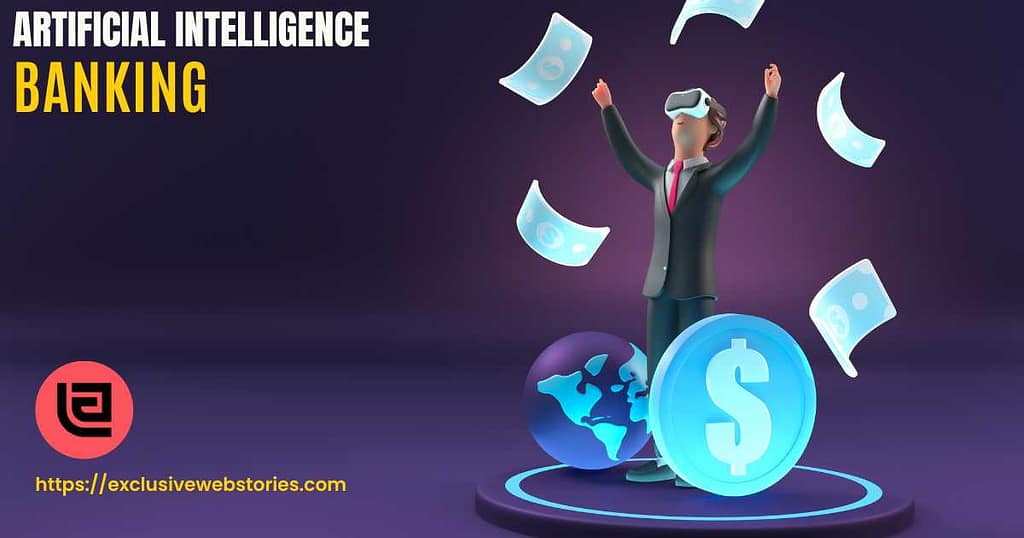Exclusive Web Stories)– Hands-On Artificial Intelligence for Banking, A New Era in Finance
- As a result of Artificial Intelligence being implemented into banking procedures, the financial industry has undergone a dramatic change in recent years.
- This breakthrough technology has improved the banking experience for customers in many ways.
- Here, we’ll look at how Hands-On Artificial Intelligence for banking is being put to use in the real world to see how it’s changing the sector.
Also Read:
Engineering Applications of Artificial Intelligence, A New Era
1. Basics of Hands-On Artificial Intelligence For Banking

1.1 – What is Hands-On Artificial Intelligence?
Hands-on Artificial Intelligence, also known as Applied AI, is a branch of AI that emphasizes the creation of useful applications of AI technology.
To better optimize procedures and make better decisions, the algorithms of Artificial Intelligence (AI), machine learning, and data analytics are widely used by banks.
1.2 – The Role of Data in Hands-On Artificial Intelligence
In the banking industry, data is the lifeblood of artificial intelligence. Every day, banks and other financial organizations amass reams of information, such as records of transactions, customer details, and market trends.
Using this information, Hands-On Artificial Intelligence effectively trains algorithms and models that the banking industry may then use to make data-driven choices.
2. Enhancing Customer Experiences
2.1 – Personalized Banking Services
Providing individualized assistance is a major benefit of having Artificial Intelligence at your fingertips in the banking industry.
Banks may personalize their services, such as product recommendations and financial advice, by using AI algorithms to examine consumer data to learn about their tastes and economic patterns.
2.2 – Chatbots and Virtual Assistants
Chatbots and virtual assistants driven by artificial intelligence are now commonplace in the financial sector.
These smart solutions ensure that clients always have access to support, whether they have questions or need help with daily duties.
Also Read:
Radiology Artificial Intelligence Impact Factor, Unlock Its Benefits
3. Fraud Detection and Prevention
3.1 – Real-Time Fraud Detection
In order to detect fraudulent activity in real-time, artificial intelligence systems can examine transaction data.
Banks and their clients benefit from this feature since it increases safety and reduces the potential for financial loss.
3.2 – Advanced Authentication
To make it harder for fraudsters to get unauthorized access to accounts, Hands-On Artificial Intelligence uses speech and facial recognition for authentication.
Also Read:
Artificial Intelligence in Higher Education, For Future Growth
4. Streamlining Operations
4.1 – Automated Document Verification
Everything from loan applications to account openings generates paperwork for banks.
The verification procedure is automated using Hands-On Artificial Intelligence, which reduces human effort and increases reliability.
4.2 – Credit Scoring and Risk Assessment
Credit scoring models powered by AI help financial institutions make better loan decisions and risk assessments.
5. Regulatory Compliance
5.1 – AML and KYC Compliance
Banks must strictly adhere to AML and KYC standards to prevent the illegal transfer of funds.
By automating processes like identification verification and transaction monitoring, Hands-On Artificial Intelligence makes it easier for financial institutions to stay in compliance with these rules and avoid fines.
5.2 – Reporting and Audit Trails
The use of Artificial Intelligence to generate comprehensive reports and audit trails can streamline compliance reporting and increase openness in the finance department.
Also Read:
What Is Cervical Stump Cancer, How to Diagnose
Bottom Line
Conclusion Hands-on Artificial Intelligence is undeniably reshaping the financial services industry by boosting consumer satisfaction, tightening security, and streamlining internal processes.
More and more ideas that will affect the future of banking are likely to emerge as institutions continue to adopt AI technology.